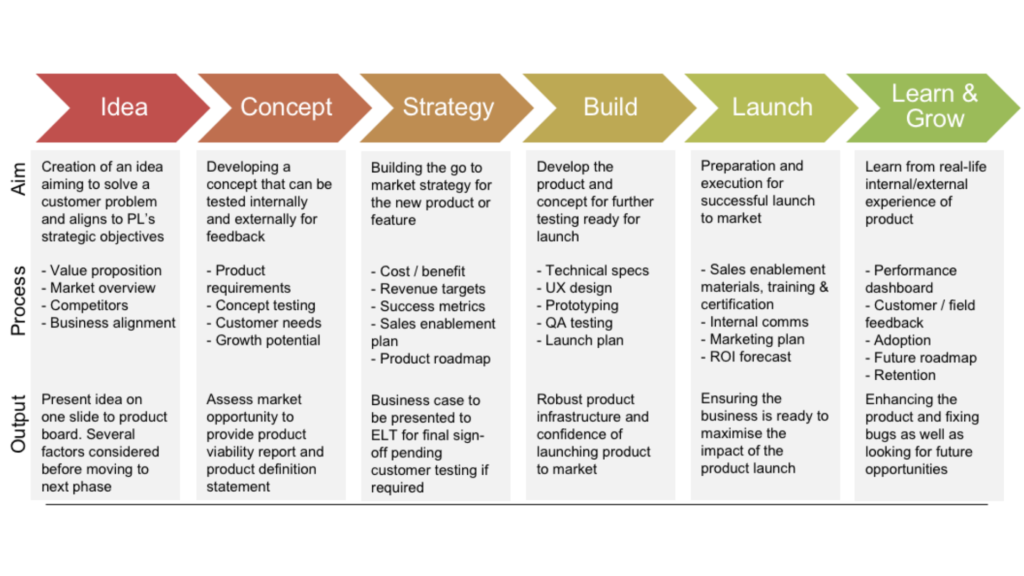Nine out of ten recurring revenue product launches are either relative or absolute failures for a single reason – lack of discipline. This was a statistic put forward by Tony Jaros, former Chief Product Officer of Sirius Decisions and Strategic Advisor to Substribe, at our recent SubsLab on product strategy.
Tony’s experience enabled him to share a few insights on what that discipline looks like, and how b2b subscription companies can optimise not just the launch, but the entire life cycle of their products.
Great product ideas can come from anywhere
As a general point, Tony recommends getting everyone involved where possible. He quotes an instance where he asked his sales leader to publish a list of scheduled sales calls, and to invite everyone from the organisation to listen in, in order to hear directly what new and existing customers wanted.
Some of the best product ideas can come from outside sales and product functions. As a CEO, he found it heartening to see engineers and customer success staff getting involved and firmly believes that this is a culture that will fuel better product ideas and development.

Working collaboratively is key
If a culture encourages all to get involved, it also has to have structure in its product lifecycle. Within this process there will be a number of stages of the product, from the vision right through to launch and growth. The process should indicate the parts played by different departments.
One of the biggest obstacles is the difficulty created by functions such as product, marketing and sales operating in silos; with a common model, using standardised terms, there can be productive alignment between teams. For example, while the product function ultimately has to create the business case for the product, there are key decisions lying within other teams. Who will buy the product? Is it the same buyer as for previous products or should you be targeting someone new? This is the responsibility of marketing and it must align with others and talk a common language, guided by a common methodology.
One of the biggest obstacles is the difficulty created by functions such as product, marketing and sales operating in silos.”
Importance of deliverables
There should be clear distinction between activities and deliverables. Each stage requires certain deliverables which are necessary before the process can move on. Tony acknowledges that this may be daunting for small organisations, but it is the clarity that matters. If you have fewer product development resources, you may need to spend less time on certain parts – but you still keep the same structure, and everyone knows their roles and responsibilities within that structure.
Tony also notes that a highly disciplined approach is important when communicating to leadership. CEOs come in all shapes and sizes – some are financially driven, some sales-driven, some even product-driven. But having a blueprint that considers all these perspectives in a coordinated way, gives a company a much greater chance of success – something that CEOs of all stripes will welcome.
Test the idea, not the product
As an organisation moves through the process, it makes an ever greater investment in terms of time, money and effort. This underlines the importance of taking it step by step and working to prove the viability of the vision before getting onto the product build itself. If it is a successful vision, accepted and understood by all, you can then make decisions about how that vision is to be delivered. It may for example require a combination of software and services instead of a software-only offering. Or there may be a piece of technology that holds the key. But you should only invest in that product planning if the vision is clear.
A case in point…
Tony cited an interesting example from a software company whose product gathered sentiment data, which was used by customers to improve engagement. The company was keen to broaden its product portfolio beyond data capture software to a blended software/services model, helping customers not just to collect data but to develop engagement strategies and implement cultural change initiatives.
All key milestones in the product development process were observed: marketing, sales and product came together to create the product vision, and exhaustive research with customers helped them to make key decisions, such as who would buy this extended product, and whether the company was a credible provider.
Without such thorough groundwork, Tony believes it would have been very difficult to make the right decisions. (Substribe members can hear this in full via the Substribe Members Library – if you need any help accessing this content, details below).
Lead from the top
Tony concluded by pointing out how committing to a product development blueprint, requires the commitment of the leadership. He sees three types of leadership teams: first, those who want to do it and who know how to do it, who are of course in a great position. Second, those who want to but who need guidance to give them the necessary structure. And, third, those who don’t want to do it. You have to ask which is yours. The first two are in a great position, the third is a non-starter. If there is no will, there is no way!
If you need assistance accessing the Substribe Members Library, please get in touch with Danielle Harvey.


Leave a Reply